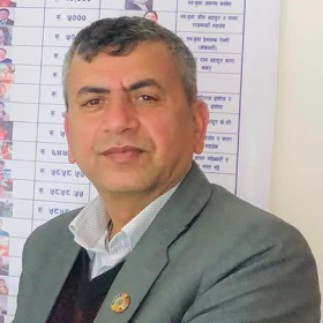Opinion
Is the end in sight?
With strong political commitment, the ambitious target of ending the AIDS epidemic by 2030 is attainable
Jhabindra Bhandari
World AIDS Day is marked every year on December 1 to raise awareness about issues surrounding HIV and AIDS. It is a day for people to show support for people living with HIV and to commemorate the victims who have succumbed to this vicious virus.
HIV is a major public health threat which has adverse socio-economic impacts on individuals, families and communities. According to the UN, there are 36.7 million people living with HIV worldwide as of 2015. The good news is that new HIV infections have fallen by 6 percent. More importantly, new HIV infections among children have fallen by 50 percent since 2010.
At the end of 2015, $19billion was invested in AIDS response in low- and middle-income countries. However, more resources are required to meet the unmet needs of treatment and care services to people living with HIV. Despite some remarkable progress, low- and middle-income countries still face funding shortages for scaling up prevention, treatment and care services for affected populations. Interestingly, world leaders have unanimously committed to ending the AIDS epidemic by 2030 as part of the Sustainable Development Goals (SDGs) adopted in September 2015.
The Nepali context
Nepal has made some tangible progress in HIV prevention—prevalence among adults has declined from 0.34 percent in 2005 to 0.20 percent in 2015. However, looking at the situation of national response, there is an emerging need to scale up and sustain prevention, treatment and care services across the country.
HIV is largely driven by sexual transmission, which accounts for more than 85 percent of the total new infections. According to the National Centre for AIDS and STD Control (NCASC), there are 263 HIV testing and counseling and Sexually Transmitted Infection (STI) management service sites across the country. As a result, affected populations now have easy access to testing and counseling services. But regular monitoring and evaluation of HIV services are essential to ensure their quality and effectiveness.
HIV is increasingly considered a development issue. Poverty, migration, unemployment and social exclusion have increased the vulnerability to HIV and AIDS among adolescents and youth. In Nepal, there are additional problems and challenges.
First, there is lack of multi-sector coordination and partnership for HIV prevention among key partners. For instance, National AIDS Coordination Committee (NACC) and District AIDS Coordination Committees (DACCs) are not actively functional due to limited capacity and resources. Second, HIV/AIDS has not received high priority in national development policies and strategies. Moreover, NCASC has limited capacity to facilitate coordination at national and local levels.
Nepal has made an investment plan for HIV (2014-2016), which primarily seeks to estimate the cost of HIV prevention and treatment services in the country. However, some critical issues such as heavy dependence on foreign aid, limited capacity for multi-sector coordination and inadequate technical support to networks of people living with HIV and AIDS need to be systematically addressed by NCASC, the Ministry of Health and key development partners.
The Global Fund has been instrumental in filling the resource gaps for national response. In partnership with civil society organisations, a range of interventions for prevention are reaching the communities. Additionally, the capacity of civil society organisations in participatory planning, implementation, monitoring and evaluation of community-based HIV interventions has significantly improved over the years.
Media’s role
On the other hand, the coordination role of the UN agencies and other stakeholders needs to be further enhanced for an effective and sustained national response. Technical assistance to the National Planning Commission, the Ministry of Health, the Ministry of Federal Affairs and Local Development for multi-sector coordination is necessary for effective implementation of the HIV/AIDS policy and strategic plan at national and local levels.
Undoubtedly, the media have a pivotal role to play in the fight against AIDS. They have an enormous influence in educating and empowering individuals to avoid contracting HIV. Therefore, media advocacy should be one of the important strategies to prevent HIV epidemic.
Moreover, regional initiatives such as Asia-Pacific Regional Framework for Action to end AIDS by 2030 is a major landmark in guiding national efforts towards expediting action and investment in HIV response. Similarly, Saarc TB and HIV/AIDS Centre can play an important role in coordinating efforts to combat TB and HIV in the region. With strong political commitment and meaningful engagement of civil society and key affected populations, the ambitious target of ending AIDS epidemic by 2030 is hopefully attainable.
Bhandari is a PhD candidate in Public Health at Chulalongkorn University, Thailand




 6.73°C Kathmandu
6.73°C Kathmandu












